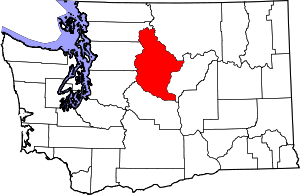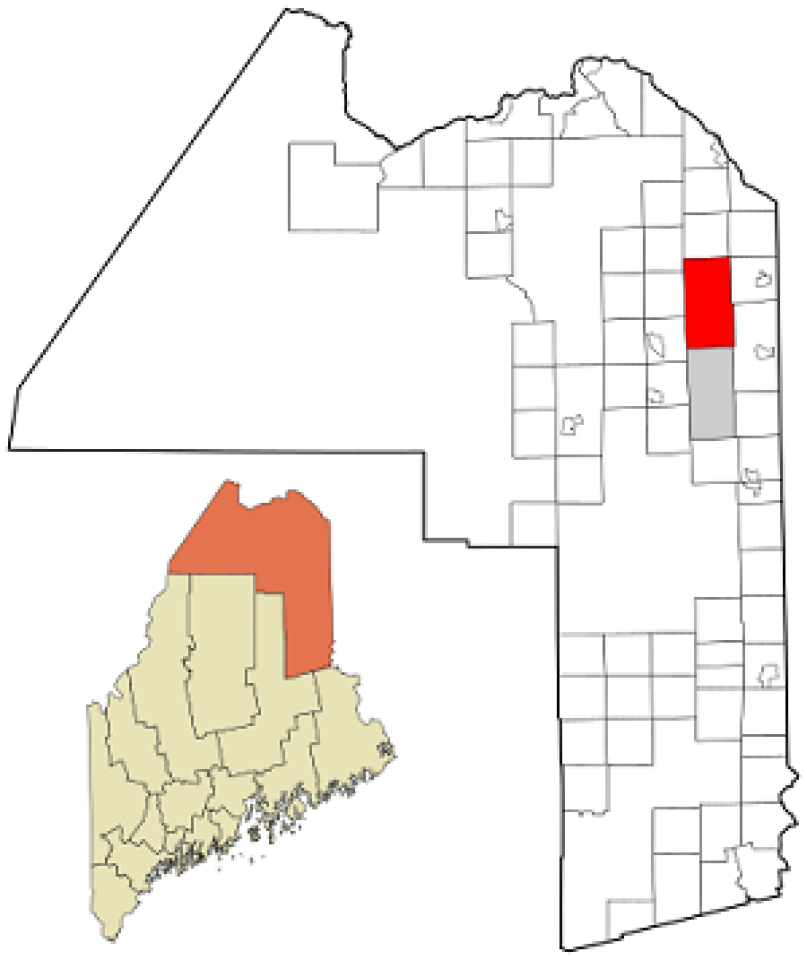
Fast, affordable Internet access for all.

The American Prospect recently published an analysis – "How Monopolies and Maps Are Killing ‘Internet for All’" – authored by our own Sean Gonsalves that lays out why the federally-backed “Internet For All” initiative will likely fall short of its aspirational goals.
It begins with facts-on-the-ground reporting about the estimated 37,000 households that do not have high-quality access to the Internet in Oakland, California and how cities across the nation are plagued with similar challenges – challenges many digital advocates say is “digital redlining.”
Here's a few excerpts:
“It would be reasonable to think the Biden administration’s $1.2 trillion bipartisan infrastructure law, passed by Congress in November 2021, would change all of this. A significant part of the law devotes $65 billion to a moon shot mission, involving all 50 states and U.S. territories, to bridge the digital divide once and for all. It includes funding to build new modern networks, and other programs to address barriers to broadband adoption, like the Affordable Connectivity Program, which helps eligible low-income households pay for pricey internet bills, as well as initiatives that offer digital skills training and a mandate for the FCC to adopt rules ‘to prevent and eliminate digital discrimination.’”
“Similar to when the federal government set out to bring electricity to every household in America a century ago, the Biden administration intends to do the same with broadband, labeling this historic investment the ‘Internet for All’ initiative.”
“But what hasn’t dawned on most federal and state lawmakers—or at least, it has not been admitted publicly—is that the trajectory we are on will not lead to Internet for All, but something more like Internet for Some.”
You can read the entire story on the American Prospect website here.
Officials in Chelan County, Washington say they are making meaningful progress on its decades-old plan to deliver affordable broadband to all 79,000 county residents. After securing financing for its latest planned fiber expansion, the Chelan County Public Utility District (PUD) says it’s exploring options to help finish the job of equitable, affordable, full-county deployment.
Chelan County PUD was formed in 1936 by local voters frustrated by costly, spotty access to electricity. Like so many utilities, cooperatives, and communities, those rural electrification efforts have helped inform the quest for ubiquitous, affordable broadband access almost a century later.
In 2001, the Chelan PUD began building a county-wide wholesale fiber network at a time when PUDs in the state were restricted from offering retail telecommunications services. (Those state statutes were rolled back by state lawmakers in May 2021). The network currently covers roughly 81% of the county, reaching about 39,000 subscribers; 21,000 of which get broadband service through one of the county’s five local ISP partners.

An ongoing network expansion plan aims to extend the reach of the county’s fiber network to roughly 42,000 homes and businesses. Those efforts are currently being funded by some of the $14.9 million in American Rescue Plan Act (ARPA) funds received by the county, as well as the Chelan PUD's Public Power Benefit Program, financed by surplus wholesale power sales.

This week on the podcast, Christopher speaks with Joey Wender, Director of the Capital Projects Fund (CPF), U.S Department of the Treasury. Joey administers the $10 billion fund targeted to help close the digital divide.
Joey and Chris discuss the flexibility of CPF funding and how it allows states to tailor their plans to their own needs. The two also talk about the importance of replenishing funding for the Affordable Connectivity Program (ACP) and how it’s critical to take action on this now, before the fund actually runs out.
This show is 22 minutes long and can be played on this page or via Apple Podcasts or the tool of your choice using this feed.
Transcript below.
We want your feedback and suggestions for the show-please e-mail us or leave a comment below.
Listen to other episodes here or view all episodes in our index. See other podcasts from the Institute for Local Self-Reliance here.
Thanks to Arne Huseby for the music. The song is Warm Duck Shuffle and is licensed under a Creative Commons Attribution (3.0) license.
Harnessing its American Rescue Plan funds, the city of Syracuse is seeking a partner to launch a pilot project as a precursor to creating a citywide municipal broadband network and to support the city’s broader digital inclusion efforts.
In his 2022 State of the City address, Syracuse Mayor Ben Walsh laid out the vision, recognizing that now is a time of opportunity.
"At no time in the past half century have conditions aligned so favorably for the City of Syracuse," Walsh said. "Population is growing. Graduation rates are rising. Private investment and job creation are again on the upswing. Our city fund balance has grown. The American Rescue Plan provides an unprecedented injection of federal aid — $123 million – to address challenges created and made worse by the pandemic. The Bipartisan Infrastructure Framework will pour tens of millions into the infrastructure challenges that always seemed just out of reach – roads, water, and broadband."
Syracuse wants to seize the opportunity by investing in both improved telecommunication infrastructure and digital literacy programs.
It has led the mayor’s office to issue a Request-for-Proposals (RFP) for the design, implementation and maintenance of a municipal network that would target households in Syracuse not currently served by the city’s incumbent providers (AT&T, Spectrum, and T-Mobile Home Internet).
The deadline for submitting proposals is 2:30 pm ET October 11.
Seeking Open Ended Innovative Proposals
Tennessee cooperatives and utilities came out at the top of the heap in the latest round of awards from the Tennessee Emergency Broadband Fund, netting nearly half of all money awarded for the expansion of more affordable broadband statewide.
The Tennessee Department of Economic and Community Development (TNECD) awarded $446.8 million to 36 applicants, who are now tasked with deploying improved broadband service to 150,000 unserved homes and businesses across 58 Tennessee counties. All told, TNECD said that 218 applicants applied for a total of $1.2 billion in broadband funding.
Of the $446.8 million in awards, utilities and cooperatives walked away with $204.4 million.
Major awards to utilities included Lexington Electric System ($27.5 million), Bledsoe Telephone Cooperative ($17.7 million), Greeneville Energy Authority ($8.2 million), Knoxville Utilities Board (KUB) ($15.2 million), Board of Public Utilities of the City of Fayetteville ($23.9 million), and Cumberland Electric Membership Corporation ($17.5 million).
“This is great news for our community,” Gabriel J. Bolas, President & CEO of KUB, said in a statement provided to ILSR. “We have known for some time that there is a need for reliable internet in Union, Grainger, Sevier, and Jefferson Counties, and this announcement proves there is a broad and concerted commitment to address their needs soon.”
Grants for Regional Telecom Giants Part of the Mix
Regional telecom giants and local monopolies were also well represented by the state’s latest broadband funding round.
Harnessing its American Rescue Plan funds, the city of Syracuse is seeking a partner to launch a pilot project as a precursor to creating a citywide municipal broadband network and to support the city’s broader digital inclusion efforts.
In his 2022 State of the City address, Syracuse Mayor Ben Walsh laid out the vision, recognizing that now is a time of opportunity.
"At no time in the past half century have conditions aligned so favorably for the City of Syracuse," Walsh said. "Population is growing. Graduation rates are rising. Private investment and job creation are again on the upswing. Our city fund balance has grown. The American Rescue Plan provides an unprecedented injection of federal aid — $123 million – to address challenges created and made worse by the pandemic. The Bipartisan Infrastructure Framework will pour tens of millions into the infrastructure challenges that always seemed just out of reach – roads, water, and broadband."
Syracuse wants to seize the opportunity by investing in both improved telecommunication infrastructure and digital literacy programs.
It has led the mayor’s office to issue a Request-for-Proposals (RFP) for the design, implementation and maintenance of a municipal network that would target households in Syracuse not currently served by the city’s incumbent providers (AT&T, Spectrum, and T-Mobile Home Internet).
The deadline for submitting proposals is 2:30 pm ET October 11.
Seeking Open Ended Innovative Proposals
Similar to a recent request for proposals from Onondaga County (where Syracuse is the county seat), the city is seeking open-ended and innovative proposals. City officials have adopted a technology neutral approach and are not specifically asking for proposals to build a fiber network as most new municipal broadband proposals involve. Still, the city does have some parameters in mind.
Plans for an open access fiber backbone in Erie County, New York (pop. 951,000) are being readjusted after having been stymied by the pandemic. The county will use Rescue Plan funding to cover the cost of building the backbone, which will be owned by the county and operated by ErieNet, a nonprofit local development corporation. The backbone will make connectivity directly available to anchor institutions and enterprise businesses, but the county hopes the project will draw private providers to build out last-mile infrastructure to residents. With the new fiber ring, Erie County seeks to increase both broadband availability and competition in the area.
The project began in spring 2019, when the county announced its plan for a $20 million open access network, which at that time it was looking to have up and running before 2022. ErieNet’s original plan was a response to an acute need for connectivity among the county’s southern and eastern rural towns, as well as much of Buffalo – despite these areas’ proximity to relatively well-connected wealthier suburban communities nearby. The county is for the most part monopoly domain, served by Charter Spectrum, Lumen (formerly CenturyLink), and in some small patches, Verizon. Verizon has cherry picked wealthier areas like Kenmore, Williamsville, and Amherst, as well as a few blocks in Buffalo by the company’s hub there, but has not found the rural or high-density and low-income areas profitable enough to build to. Relatively smaller providers like Crown Castle and FirstLight have also made infrastructure investments in parts of the county, but do not appear to have expansion plans.
Last March, Caribou, Maine city council members expressed unanimous support for a charter amendment allowing the Caribou Utilities District to establish a broadband infrastructure division. It was just the latest move in a multi-year quest by the city to finally deliver affordable fiber broadband access to every last city resident.
Groundwork for the effort was laid one year ago, when city council members approved using $159,000 in American Rescue Plan Act funds to craft a broadband engineering study with the help of Caribou’s Business Investment Group and executives from local ISP Pioneer Broadband.
Late last March, the Maine Senate unanimously approved LD 1949: “An Act to Amend the Caribou Utilities District Charter to Include Broadband Services,” which formally, as the name makes clear, provided approval for the CUD to expand its services into broadband access.
Now the hard work begins.
The plan as it currently stands is to build an open-access dark fiber network to every unserved Caribou residential and business location. The city would own the network, but private ISPs would provide last mile service to customers.

“We would like two or more ISPs to provide citizens with a choice of providers,” Hugh Kirkpatrick, Caribou Utilities District general manager, recently told the Bangor Daily News. “Competition should keep monthly prices lower and customer service higher.”
The National Telecommunications and Information Administration (NTIA) announced earlier this week that Louisiana will be the first state in the nation to receive federal grant planning funds to help states prepare for the deployment of high-speed Internet infrastructure and digital skills training under the Biden Administration’s “Internet for All” initiative.
Enabled by last year's passage of the Infrastructure Investment and Jobs Act (IIJA), the $2.9 million heading to the Pelican State is from the Broadband Equity Access and Deployment (BEAD) program and the Digital Equity Act (DEA) – a development Commerce Secretary Gina Raimondo said was a signal that “the Internet for All initiative is on track and on schedule.”
Over the coming weeks, every state and territory will have funding in hand as they begin to build grant-making capacity, assess their unique needs, and engage with diverse stakeholders to make sure that no one is left behind. My thanks go to Governor Edwards and his team; Louisiana was among the first to sign onto Internet for All and to apply for funding, and I know they’re ready to get to work for the people of Louisiana.
According to NTIA’s press announcement, $2 million of the planning funds being allocated to Louisiana come from the BEAD program and will help the state:
Gainesville City Commissioners dealt a severe – if not fatal – blow to the expansion of municipal broadband in the Florida city where Gatorade was invented. Last week, five of the city’s seven commissioners voted to reject a proposal to spend $10 million of its American Rescue Plan funds to build a fiber-to-the-home (FTTH) pilot project.
As we reported here and here, city officials had been leaning in the direction of using $10 million of its $32 million in federal rescue plan funds to extend the city utility’s existing fiber network to bring high-speed Internet access to about 5,000 households caught on the wrong side of the digital divide.

Gainesville Regional Utility (GRU) has already deployed over 600 miles of fiber throughout the city, and for the past two decades, its subsidiary GATOR NET has been offering symmetrical gig-speed service to a limited number of area businesses, apartment buildings, government agencies, and community anchor institutions.
In 2017, the citizen-led group Connected Gainesville began a public campaign with the hopes of persuading city officials to bring FTTH service citywide in a market dominated by Cox Communications, the incumbent monopoly cable provider serving this city’s approximately 141,000 residents, 56,000 of whom attend the University of Florida.
Death-knell for Municipal Broadband in Gainesville?